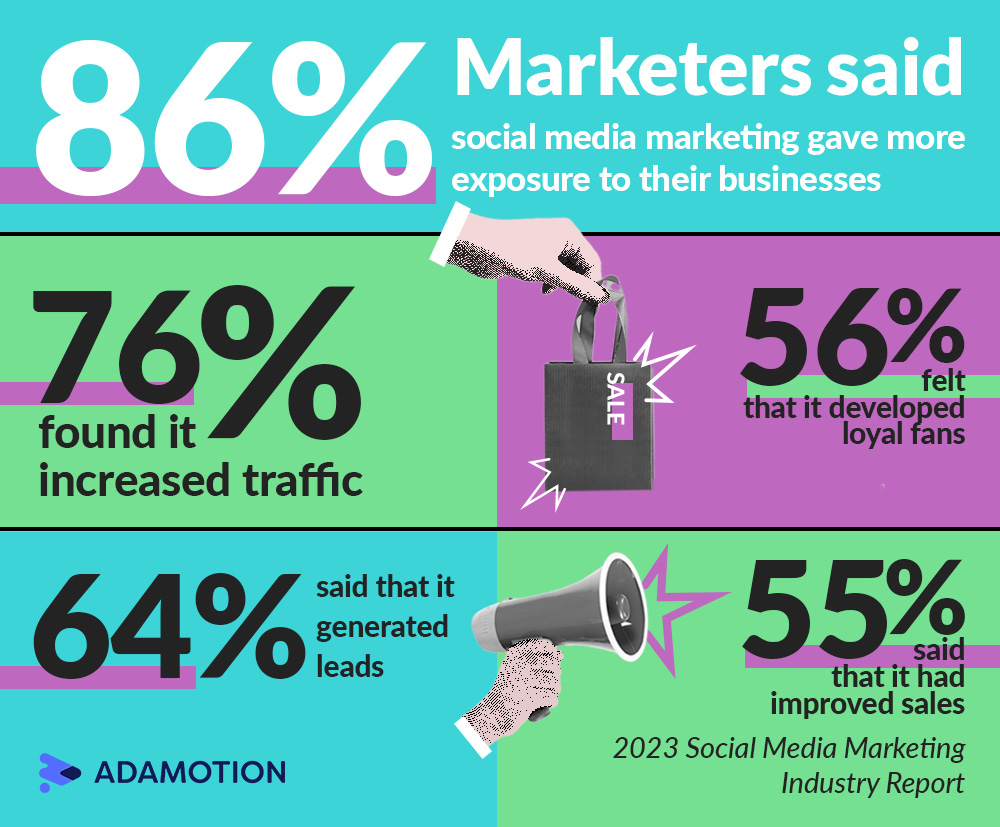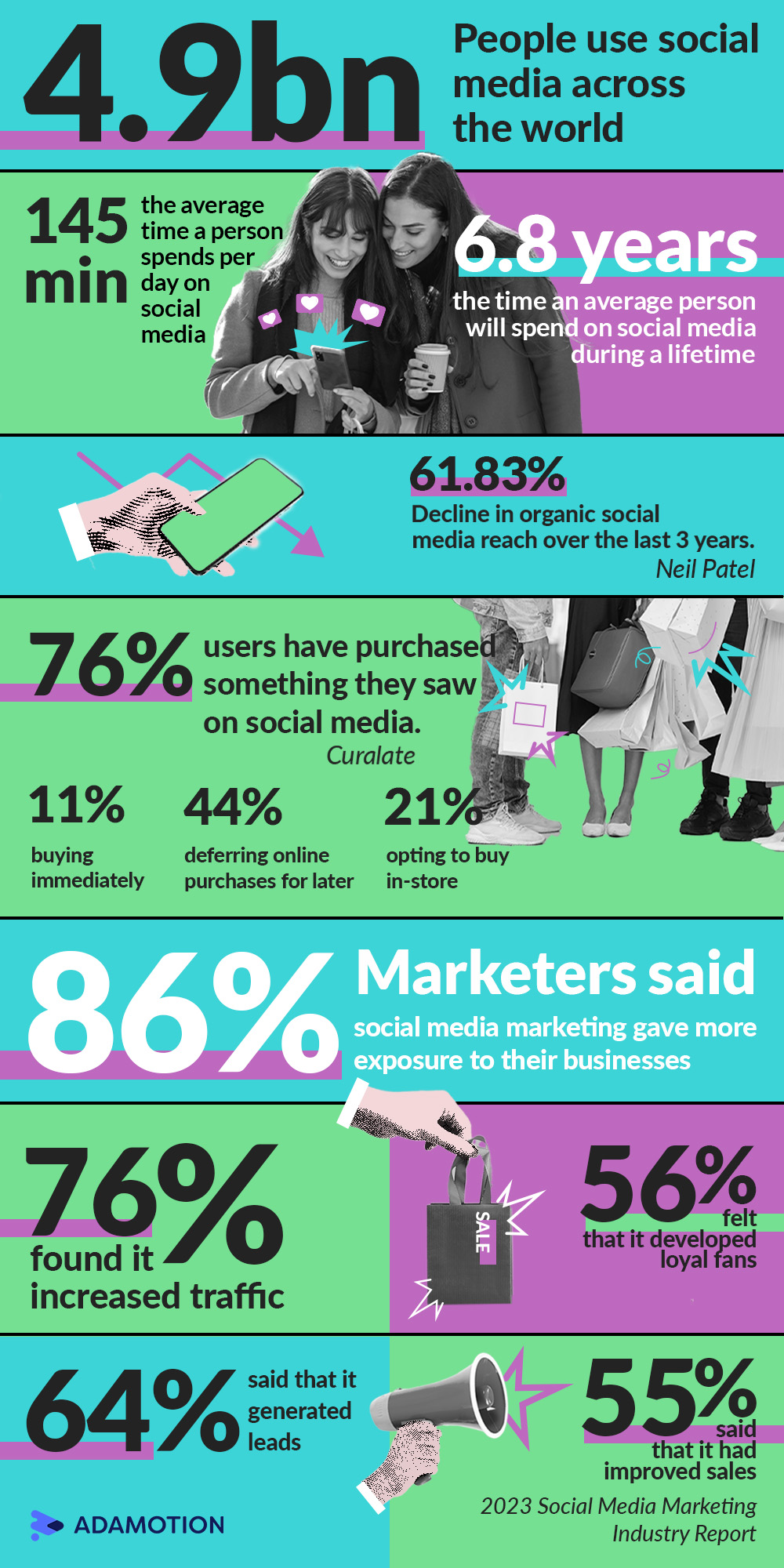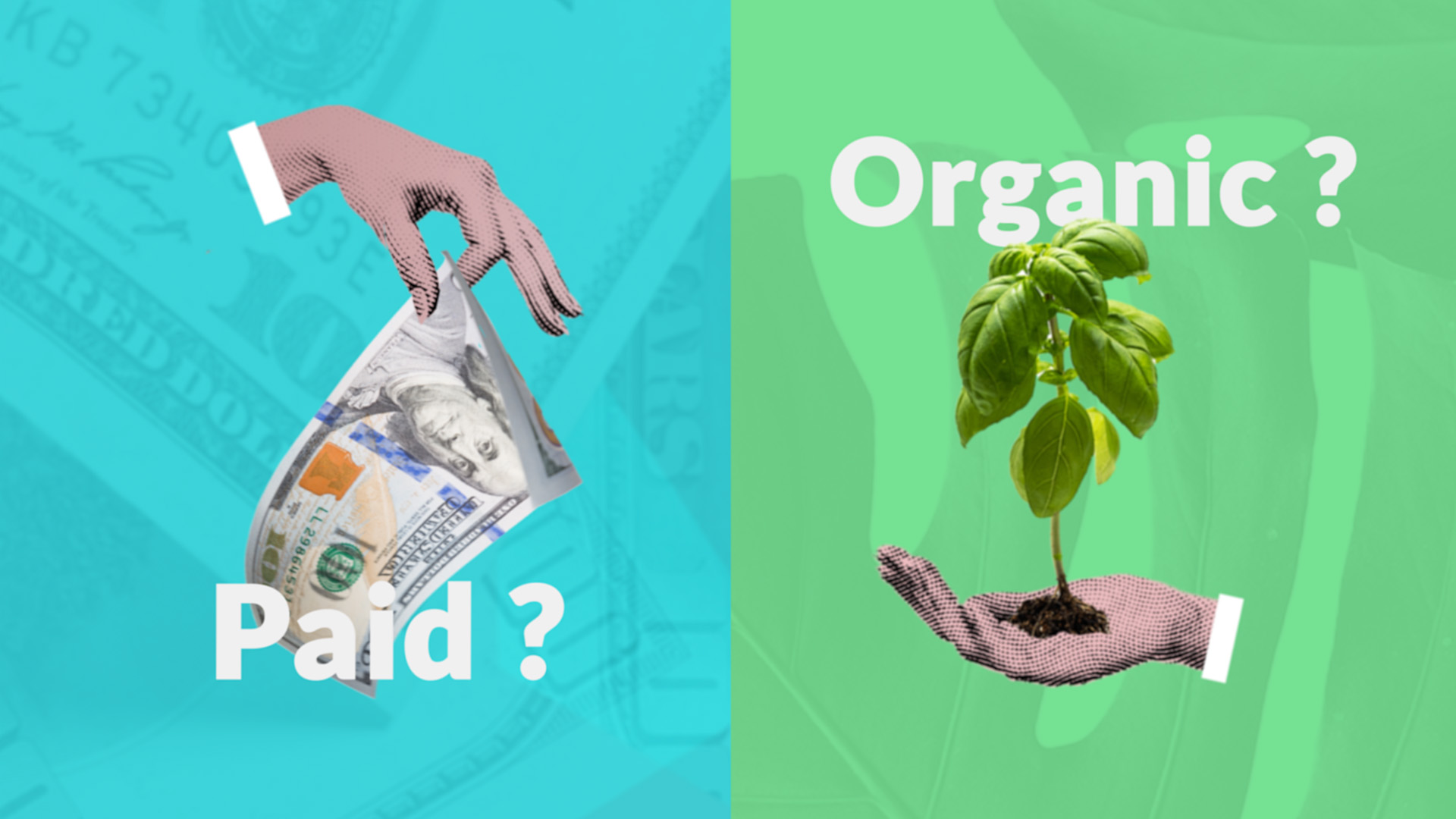Paid or organic content on social media, which one works best? The current best strategy revealed.
Should you take the plunge into paid content for social media, or try to dominate with organic? We break it down here.
When it comes to digital marketing, deciding whether to use paid or organic content on social media can be a challenge. We look at which one is better? What sets them apart? And what’s the best strategy in 2024. Let’s jump in and look at the differences and benefits of each.
What's in this article:
The Basics
What is Paid social media content?
The different types of paid social media content available:
-
Boosted posts: extend your reach by promoting your best posts and messaging to a larger audience using targeted promotion.
-
Sponsored ads: As the name suggests, these are paid ads that can be created using all the common formats on your platform of choice: carousels, stories, reels etc. They are labelled as sponsored and can include a distinct “call to action” which is clickable.
-
Retargeting ads: Are a powerful way to get in front of those who have already interacted with your brand or website, to reengage or present them with a specific offer.
What is organic Social media content?
Organic Social media content simply refers to any content that is not promoted using paid means. The only way for it to be seen or for your reach reach new prospects, is naturally, or as the name suggests, through organic means.
This category includes everyday posts, stories and reels, the types of content people post everyday.
When talking about organic growth, we are referring to growth over time that happens naturally.
The algorithm
Mastering the organic game depends a lot on the whims of the dreaded “algorithm”.
The algorithm is something people either love or love to hate, but most find mysterious. All platforms have an algorithm which decides whether your content gets shown, not only to your existing followers, but also to new followers.
You don’t have control over this as you do over paid content, and while there are thousands of gurus who want to teach you the ‘latest hack’ to master the algorithm, the truth is, nobody knows the secret formula behind the it, and it changes constantly without notice.
We will never know the secrets of the algorithms, but if you follow the golden rules for organic content you’re far more likely to be promoted in a natural way to relevant scrollers.
Post regularly, post valuable content that people stop scrolling for and engage with, comment on and share. If you do that, the algorithm is more likely to suggest your content to new users, because what keeps people on the platform, is good for the platform. It’s as simple as that.
Shares
The other way to grow organically on social media is through shares. If your followers are sharing your posts with others, your following is likely to grow. There’s nothing more powerful than word of mouth after all.
The algorithm will notice people sharing your content too, what’s good enough to share is good enough to promote. Naturally, creating content that people want to share can be a challenge, but many posts and accounts have gone viral this way, and many more will.

If it's easier to reach my audience with paid social media, why would I bother with organic posts?
Prospects don't yet know, like or trust you.
Organic is great for building relationships and loyalty
The organic game is free to play
The other major disadvantage of paid social media is an obvious one, it’s not free.
A lot of money can be wasted if your targeting is wrong, your messaging is missing the mark or your content is just not very good.
It’s another good reason to practice sharpening your message with Organic content. It gives you the opportunity to practice and tweak your message, style and strategy while not spending any money. It let’s you practice for free.
Sustainable Growth
While organic growth may take time to materialise, it can offer lasting benefits. Even if you slow down, organic can continue to grow, unlike paid ads, where traffic halts once the campaign stops.
Higher engagement
Studies consistently show that organic content tends to have higher engagement rates compared to paid listings, indicating stronger user trust.
Organic growth sounds great, so why use paid?
To boost your reach & spread the word
If organic content is akin to natural growth, we can think of paid social media as fertilizer to give your budding social media content a boost. We all know influencers who have massive organic reach and don’t need any paid promotion to keep adding followers. But to reach that level takes time, and is by no means guaranteed. Many used the help of paid advertising in the beginning to help spread the word, when few people knew they existed.
In addition to expanding your social media reach, paid ads are great for:
- Promoting specific offers
- Targeting social media users who have interacted with your brand before
- Reaching a very specific demographic and/or interest group
- Promoting time sensitive offers
- Promoting a new product to those outside of your current following
- Spreading your best content to new audiences
- Driving traffic to your website, i.e. with a giveaway such as an E-book, guide, email course etc.
- Promoting a webinar or other off-platform lead magnet
- Increasing revenue. If you have tested your ad campaign on a small scale and you are confident of a positive ROI, you can strategically scale your campaign with paid promotion
- Paid campaigns provide excellent analytics, meaning they can be fantastic for testing your message, graphics style, video effectiveness etc.
In summary; Paid advertising offers several advantages:
- Scalability: With paid ads, you can swiftly scale up your campaigns to increase traffic as much as you desire. Need more visitors? Ramp up your campaign and see results straight away.
- Targeting: The beauty of advertising lies in its ability to target specific demographics, locations, and user behaviors. This ensures your content reaches the most relevant audience.
- Dayparting: Choose when your content is shown. You have control over when your ads are displayed, allowing you to target peak times for your audience, or only times when your ads are most effective.
- Direct prospects to a Landing Page: With paid posts, you can direct your prospects to a dedicated landing page optimised to convert prospects into leads or sales. These pages are tailored to your offer with clear calls to action, often outperforming generic SEO webpages in conversion rates.
- Perform A/B testing: Simply put, you can test different types of ads or content and measure the response. Try different copy, imagery, videos or calls to action. You can even show the same offer to different demographic groups and gauge which is more interested. For a great guide to the basics of A/B testing, visit: AB testing guide – hootsuite

Changing trends: shopping on social media
Can you use a paid only strategy?
Yes, this can be a good strategy for a campaign, or if you don’t have the resources to put a lot of time into building a social media following. If you have a well optimised website or landing page, you could simply use a well crafted and highly targeted ad with a good call to action to drive traffic directly to your offer, squeeze page, or email list.
Additionally, some types of businesses may find it difficult to grow an organic following on social media, simply because their offer is not very ‘sexy’, or they sell something people just don’t need most of the time.
For example, a roofing company or accident lawyer might struggle to build loyal followings because most people don’t replace their roofs very often, and they’re not usually planning on having an accident any time soon.
But with the power of targeting, paid ads and sponsored posts can target those prospects directly, selecting people who are searching online for a roofing contractor or accident advice. In these cases, a paid ad only strategy can be extremely effective.
What’s more, these campaigns can be extended to google ad-words, or any other non social media platform offering highly targeted advertising.
While this might not be the most budget friendly method of customer acquisition, it does offer the advantages of laser focused targeting and a highly quantifiable ROI.
So what's best? Paid or organic content on social media?
Why a combination of paid and organic content is the current best strategy.
Faced with the choice between paid advertising and organic content, it’s easy to feel overwhelmed. But here’s the truth: you don’t have to choose. Embracing both as part of your strategy can be the most effective way to power your growth.
There’s no doubt purely organic reach is more difficult than ever before.
Respected internet marketing guru Neil Patel researched thousands of social media accounts and determined organic social media reach has declined by around 61.83% over the last 3 years.
It’s still possible to succeed with purely organic content, but you have to put in a huge effort, it can be slow, and there are no guarantees. Adding paid content to your arsenal can speed up the process of reaching more followers and clients
Paid content also helps you to test, tweak ,and improve at a much faster pace. As it’s often said; speed is the best weapon in business.
How Paid and Organic content can work together?
Exactly how paid and organic work together will be unique to your brand, offering, and messaging.
There is no one size fits all strategy, and ultimately the only way to truly master your strategy is to get started, test, measure, improve and go again.
But here are a few ways paid and organic content can work so well together:
- Bypass the algorithm. The algorithm simply won’t show your content to all users who might be interested in your brand. Let’s face it, we’ve all been on Instagram, watched a few cute dog videos then low and behold, the only thing we seem to get shown in our feed are more cute dog vids. That’s not much help if your product is productivity system or a vegan nootropic smart drink. Therefore targeted promotion helps us get in front of people we think might be interested, even if they are not necessarily looking for our offering yet.
- Promote your best content to a wider audience. Much like point 1, you may have organic content that your followers loved and engaged with. It makes sense to give this a push to a wider audience, as you already know it’s good.
- Use paid content for testing. Sending out A/B test content or ads to your target audience, is a great way to find out what resonates and works. Paid analytics is so in depth, you really can learn so much information about how your target audience reacts to certain to content. When you have a clear idea about what types of content and messaging is most effective, you can double down on that type of content for both paid and organic.
- Organic builds relationships. Producing organic content in the beginning can seem like a chore when nobody is listening. But having an account full of valuable, inspiring or entertaining content will give visitors from your ads something to browse through. And remember your best content can be tweaked and shared again, so you don’t always have to reinvent the wheel.
- Use your organic content to really get to know who is following your content. Use questions, interact with your followers, check out their profiles, do some digging. After some research, you can build a detailed picture of who your followers are to help refine your paid targeting. If it works with your loyal followers, it’s likely to work with people just like them.
- Paid content can drive short term growth, while organic can produce long term results.
- Many big corporate companies struggle with organic content, not really knowing what to post. That’s why they often rely on paid content. This is where a SMB can differentiate from the crowd, adding personality, niche content and better messaging to the mix.
- It’s like a cheat code, both provide valuable feedback for the other, while paid content helps expand your reach much faster.
- Data is the new asset. There is more data collected on us and used against us than ever before. Using organic content alone does not allow us to access this data to our advantage. Combining paid content in your strategy, is like paying to use of this powerful data set for your advantage.
Don't forget a content marketing system - distribute widely.
A lot of focus is put on social media for client acquisition, and rightly so. While it’s possible to exist only on Social media, and some brands do, it’s usually a better idea to have a content system that all feeds into each other. So don’t forget your website, blog, YouTube etc. Keep your account names consistent across all platforms, this really helps to dominate SERP – Sera
Don’t forget email marketing is still one of the most effective mediums today, so encouraging your social media followers to join your list is a great move.
In today’s competitive online landscape, diversifying your marketing efforts really important. From Google AdWords to social media, SEO, and email marketing, explore every avenue to maximize your reach and impact.
Conclusion
Infographic: marketing on social media statistics 2024



